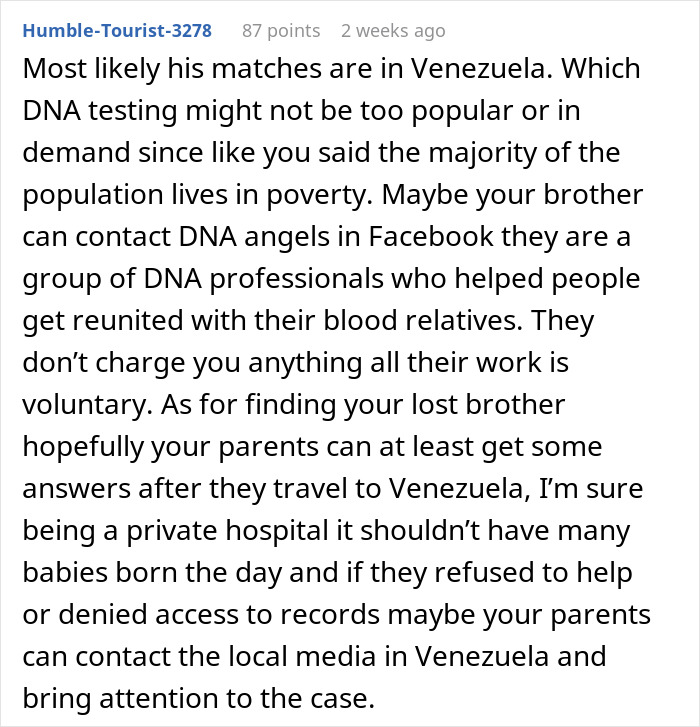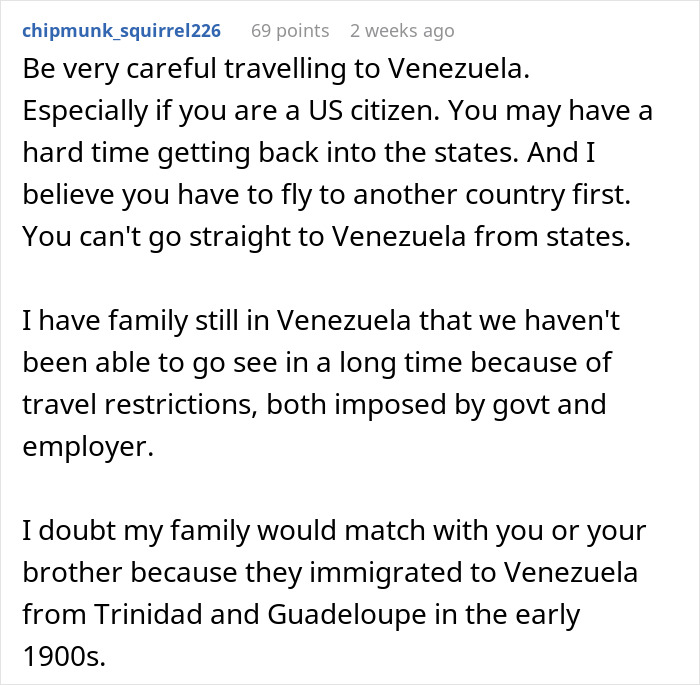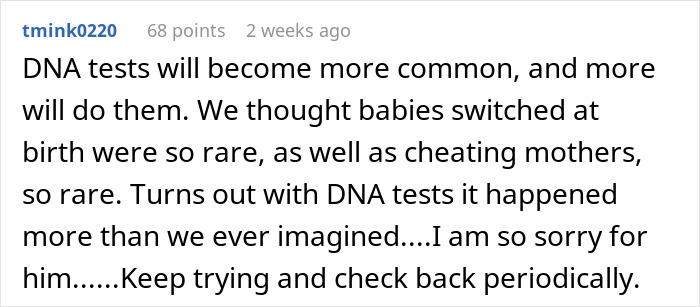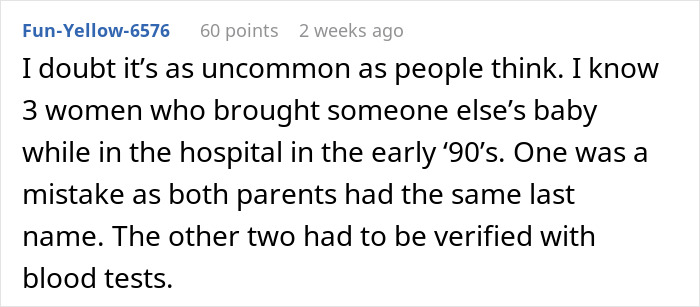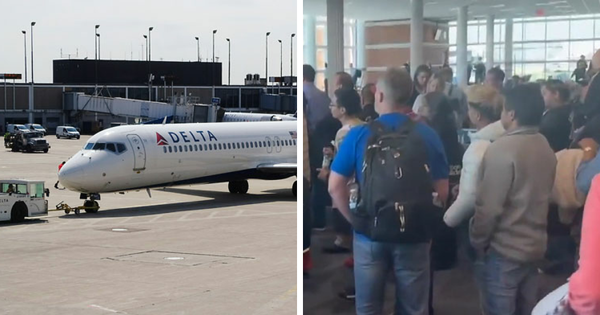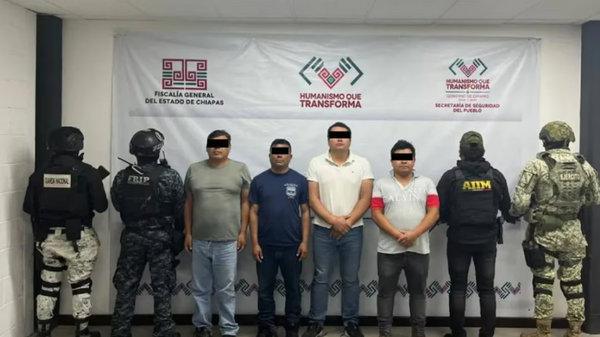Mail-in DNA tests have become a new way for people to find their roots. In 2022, 21% said they’d taken a mail-in DNA test, and 45% of those who hadn’t said they would like to do so in the future. But not all quests to find one’s ancestry turn out well.
A simple Ancestry DNA test caused some real drama for this family when it came to light that the son wasn’t biologically related to any of his family. As the family scrambled for answers, internet sleuths began offering theories: were the parents lying, was there an error in the test, or were the babies switched at birth?
Bored Panda reached out to the sister who posted this story, u/BigPensamientos, and she kindly agreed to tell us more about how her family is grappling with this situation.
We also sought the expertise of professional genealogist and family historian Michelle Smith from Devon, UK. She spoke with us about how often discoveries such as this happen and what the best course of action would be to find the brother’s biological parents. Read both conversations below!
More info: Family Trees Unlocked | Instagram
A sister convinced her brother to take an Ancestry DNA test, but the results weren’t what she was expecting

Image credits: Louis Reed / Unsplash (not the actual photo)
Turns out the brother wasn’t biologically related to any of his family members
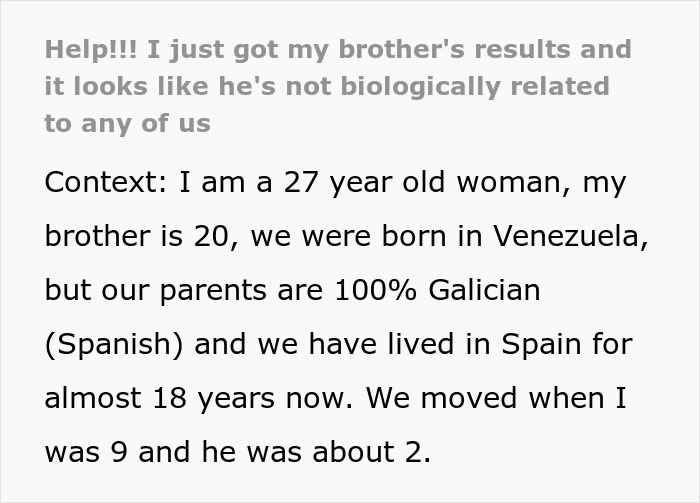

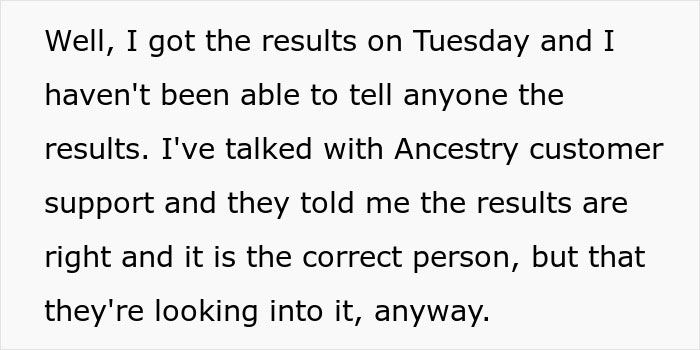

Image credits: Yunus Tuğ / Unsplash (not the actual photo)
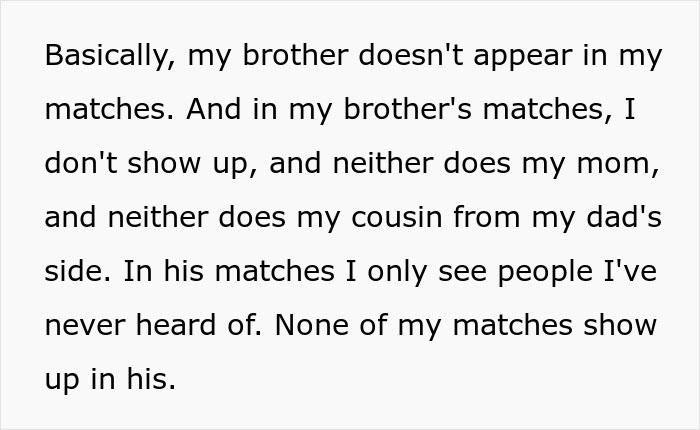
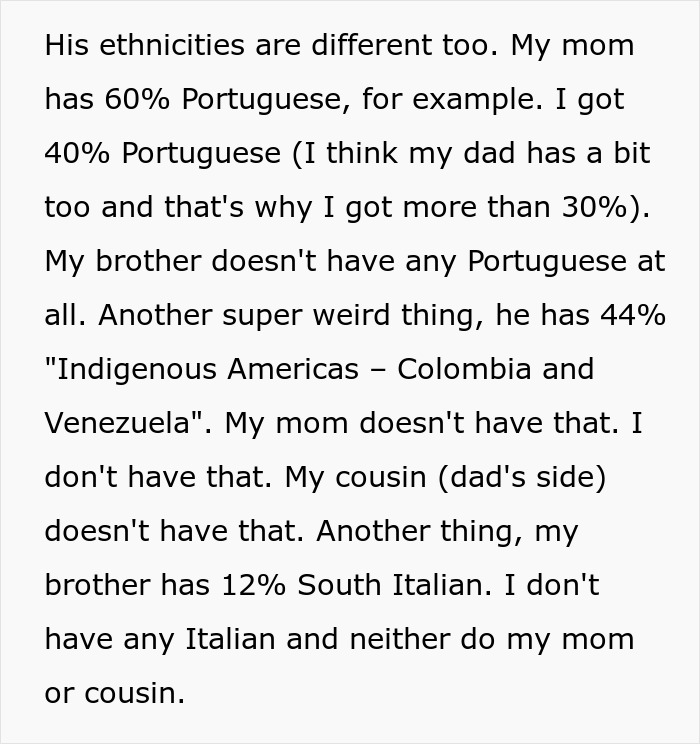
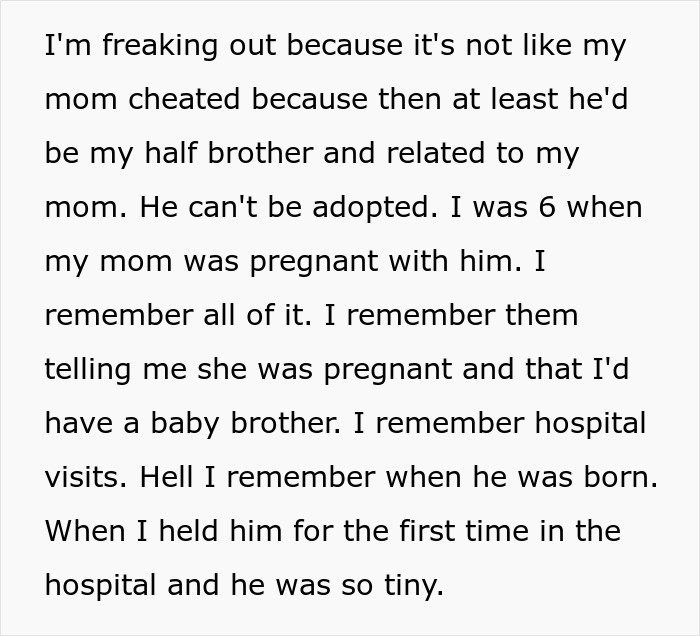

Image credits: Charlotte Knight / Unsplash (not the actual photo)
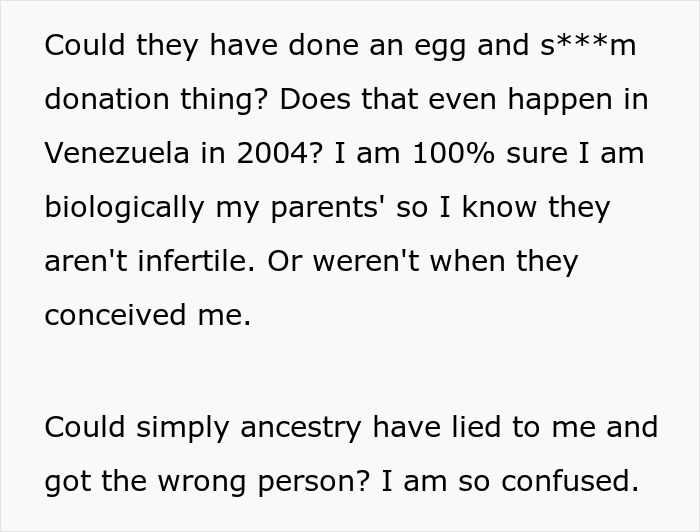
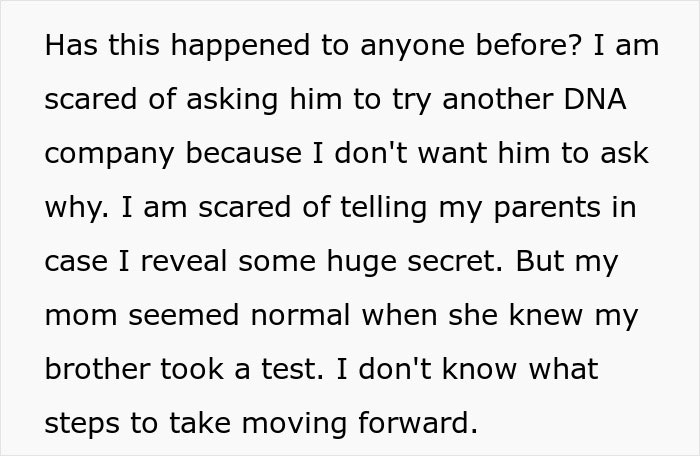
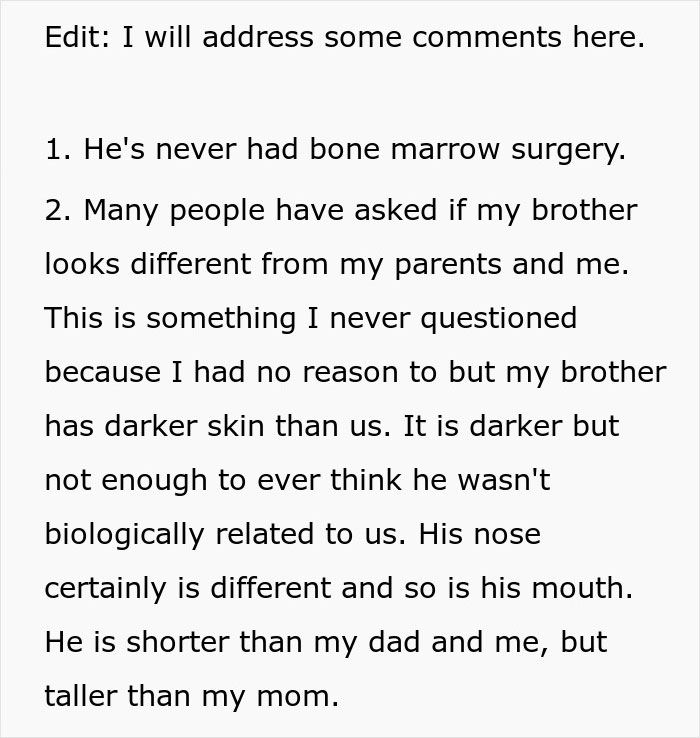
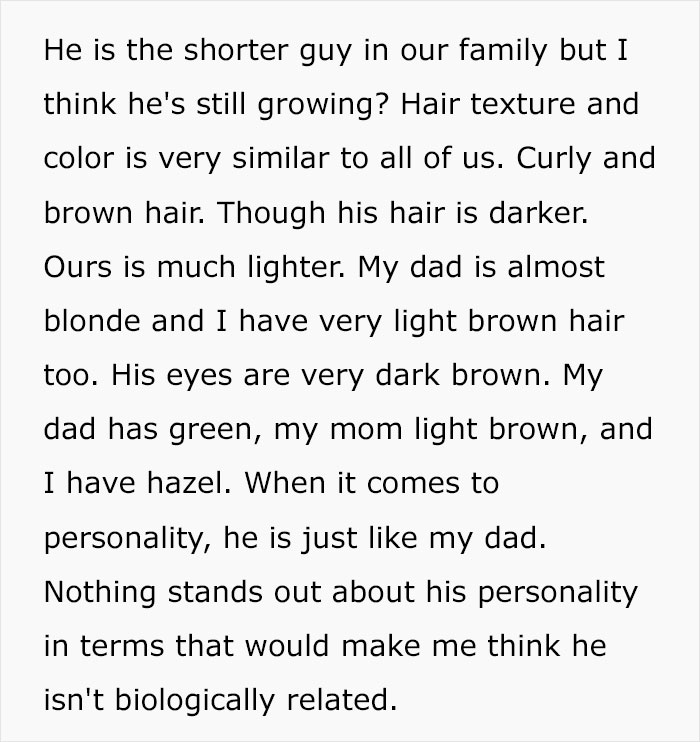


Image credits: Guillaume Issaly / Unsplash (not the actual photo)
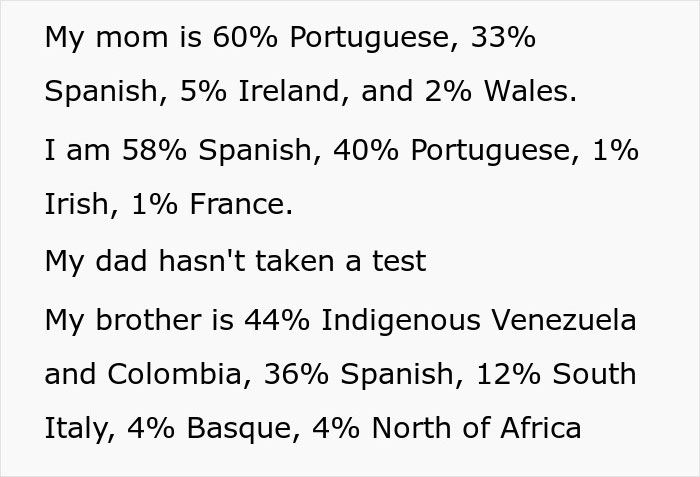
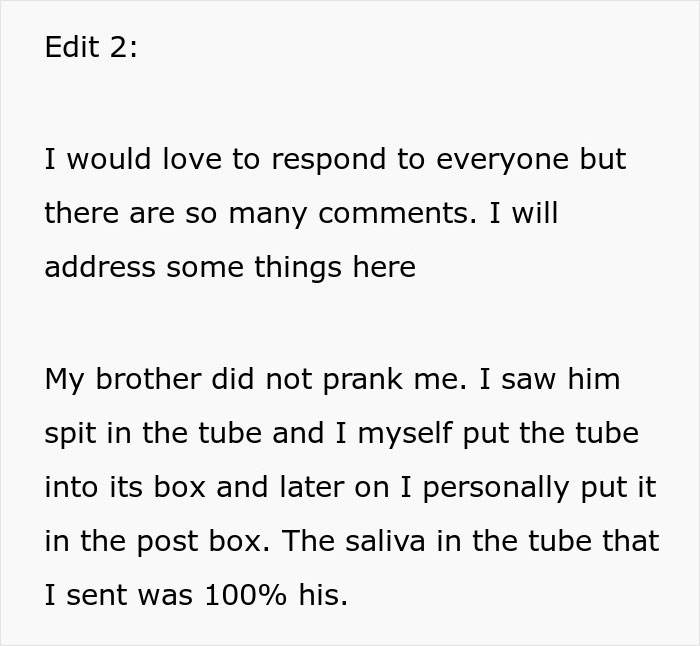
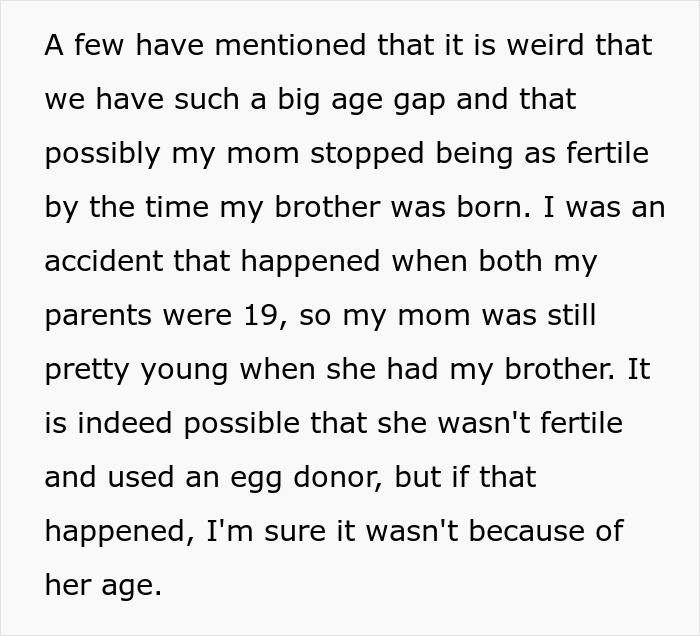
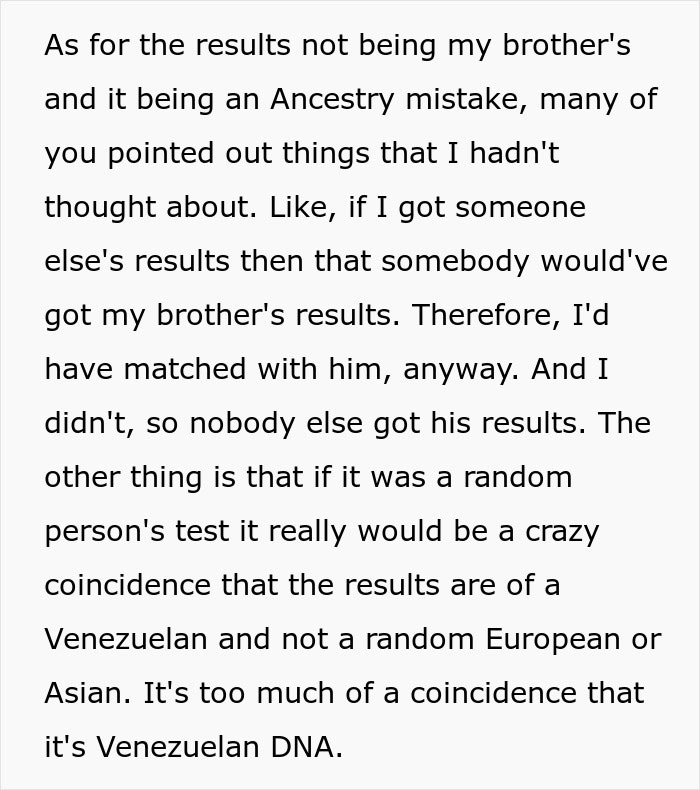
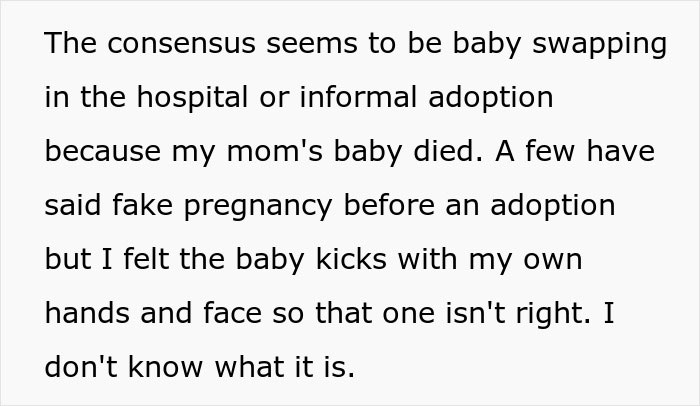


Image credits: Victoria Romulo / Unspalsh (not the actual photo)

Image credits: BigPensamientos
The internet had theories: the babies could’ve been switched at birth, the parents could’ve used IVF, or the brother had gotten a bone marrow transplant
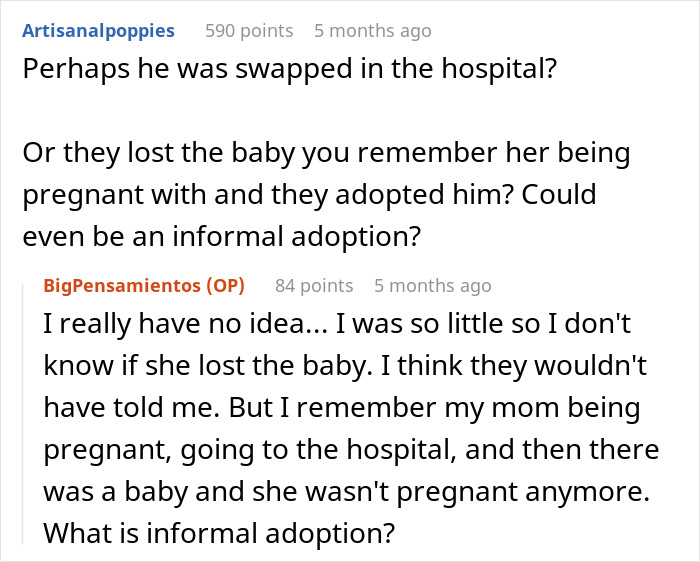
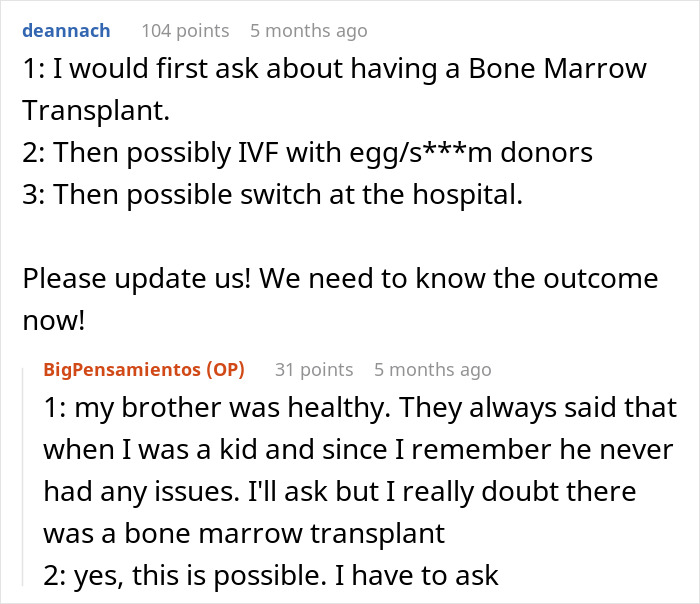
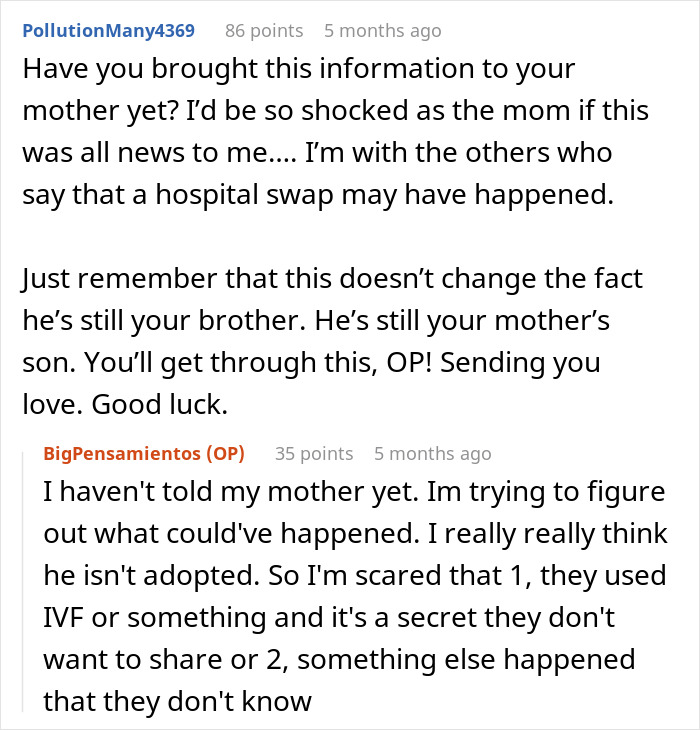
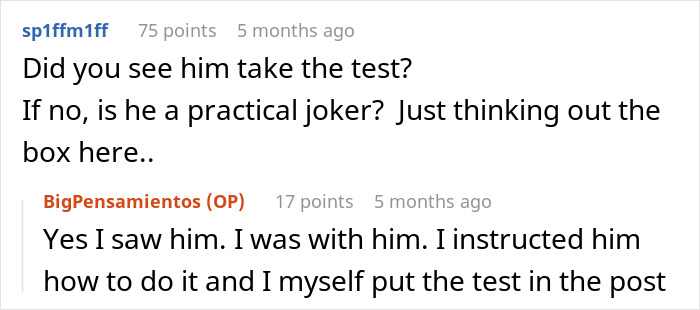

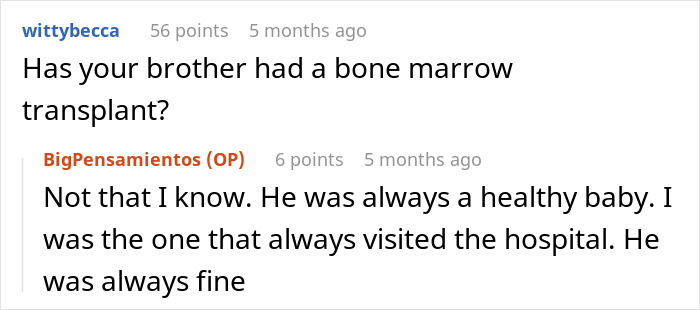
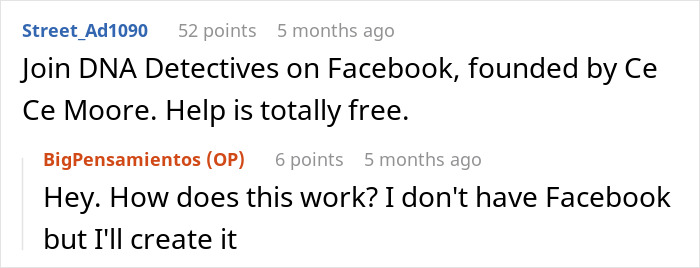
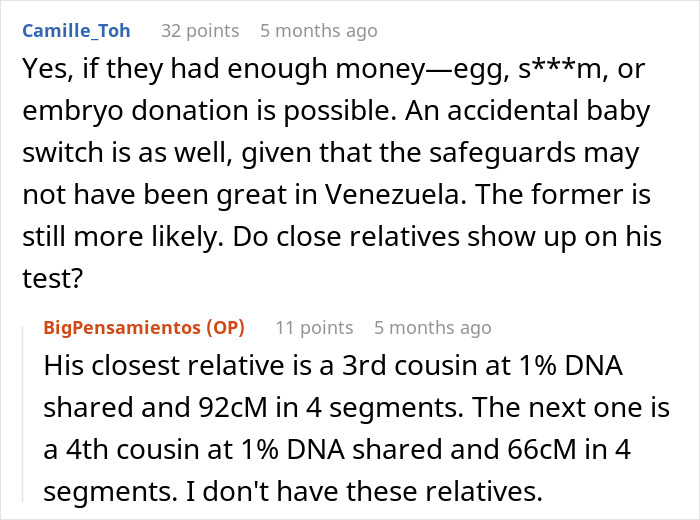
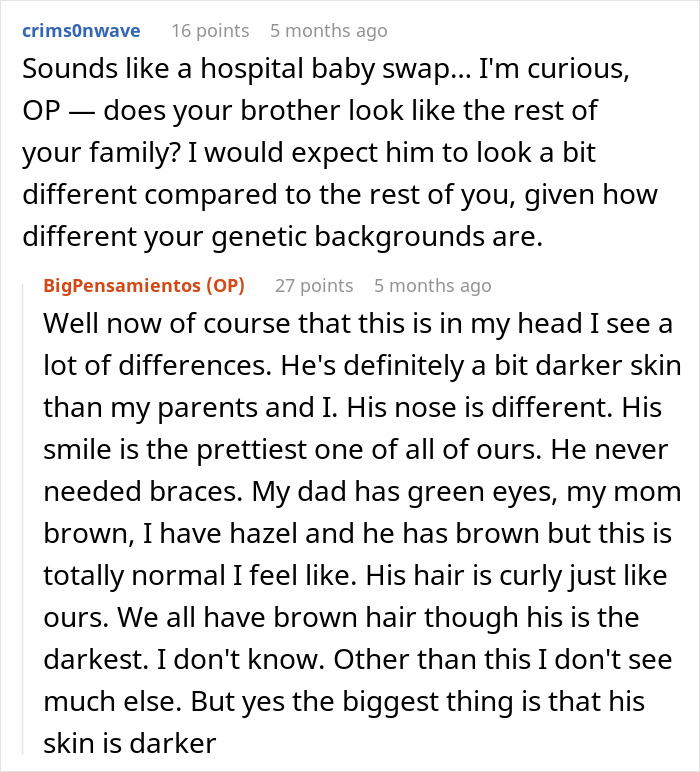
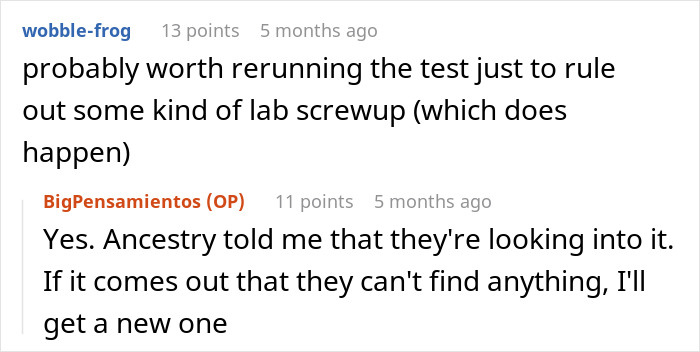
Whatever it was, netizens urged the young woman to tell her parents and brother the truth


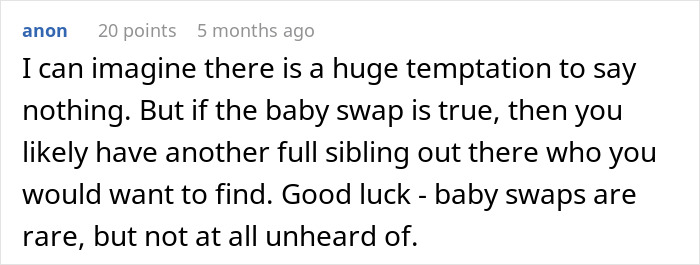
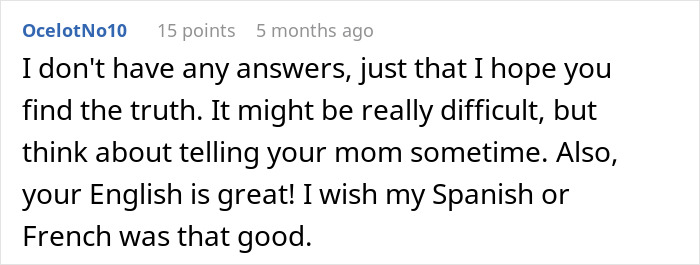



Sometimes the sister feels guilty that she was the catalyst for this whole mess, but her family reassures her they are glad to know the truth
We got in touch with the sister who started this whole ancestry saga for her family. She says that despite everything that came to light, her relationship with her brother remains the same. “I think my relationship with him hasn’t changed much. In the beginning, it was weird.”
“Because on top of everything, it was kind of my fault,” she admits. “It was me who insisted he did the test. So he was a bit angry with me. But now he’s OK. We’ve talked multiple times about what this means and we’ve always both agreed that it doesn’t matter. He’s still my little brother.”
Some commenters shared anecdotal stories about baby-switching in Venezuelan hospitals. But u/BigPensamientos says she and her family haven’t found anything specific about that yet. “My parents say that there were stories and myths and things like that,” she says. “But it was a very good hospital. The most expensive in Caracas at the time, so they didn’t even think to be careful.”
At the end of the day, the Redditor doesn’t regret urging her brother to do the test. “There were times [where] I regretted it. I feel sometimes like I caused so much pain. But both my parents and my brothers say they are glad to know. So it’s not my place to regret, you know?”
“Although lab errors can occur, it is rare,” professional genealogist Michelle Smith tells Bored Panda
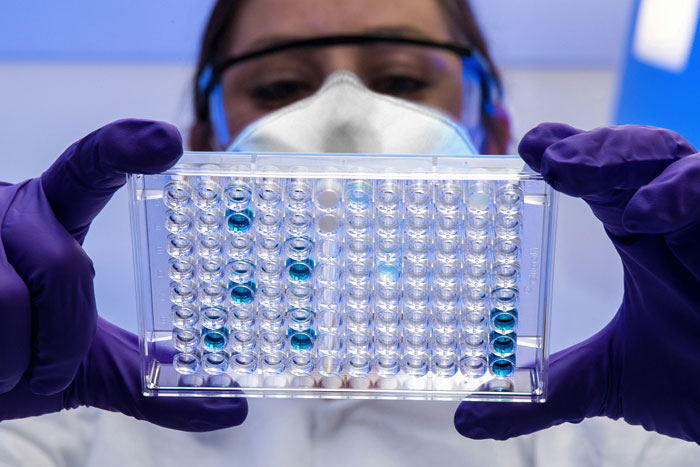
Image credits: CDC / Unsplash (not the actual photo)
As mail-in DNA tests become increasingly popular worldwide, the DNA databases grow larger, and, naturally, more stories like these happen. Professional genealogist and family historian Michelle Smith tells Bored Panda that one of the most common discoveries is that one parent (usually the father) is not the biological parent.
She points to a study where researchers surveyed 23,196 FamilyTreeDNA users and found that 5% of the participants discovered an unexpected biological parent of any gender. Researchers at the Baylor College of Medicine also found that 5% of the 23,000 respondents who used a DNA service discovered a full or half-sibling they didn’t know about. 3% also found out their parent is not their biological parent.
“These may not seem like high percentages, but the reality is 690 people found out a person they believed to be a biological parent wasn’t,” Smith says, explaining the scope of the problem.
It may then seem that platforms like Ancestry and 23andMe can find any lost family member. But Smith says that people can only find their biological matches in the databases of these companies. “This is why many people choose to take a test with Ancestry as their database of 25 million people (and counting) is the largest in the world,” she adds.
In a situation such as this, a lab error is quite unlikely. “DNA is analysed slightly differently by each company, which can affect matches,” the professional genealogist explains. “Although lab errors can occur, it is rare. Not finding matches is more likely to be a result of the size of the company’s database, the type of test you took, and how unique your genetic makeup is.”
She also cautions that people searching in Asia, Africa, South America, and Eastern Europe will find fewer matches
The first thing to do after a surprising DNA discovery would be to review the DNA match list, Michelle Smith says. Usually, there should be a list of names and usernames in the company’s database with the people who share DNA. “The most likely matches are usually 1st and 2nd cousins,” Smith notes. “In this case, if the brother was lucky, he might have a close family match such as an aunt or uncle or half-sibling.”
In this particular case, the brother wouldn’t need to look far into the family history, as he’s looking for parents. “The idea is to identify people with whom you share a common ancestor, which are usually distant cousins of different degrees, and then use that information to trace family members forward in time,” Smith explains.
She also recommends taking DNA tests with other reputable companies. “If the results remain the same, it would at least greatly improve his chance of matches by being added to more databases.” If that doesn’t prove successful, a genealogist who specializes in DNA evidence can help. “These genealogists understand both DNA data and genealogical records,” Smith says.
She also notes that it’s easier to find biological relatives where DNA testing is more popular, like in the U.S. and Europe. “People searching in Asia, Africa, South America and Eastern Europe will find fewer matches,” she points out.
Nevertheless, that doesn’t mean people shouldn’t try. Smith does caution that DNA alone doesn’t prove anything. “Sometimes you get no matches as no one from the family line you are searching has tested yet.” According to her, a DNA test should always be used together with documentary evidence, as only then can a credible genealogical conclusion be made.
A few days later, the sister talked to her parents and they were just as shocked as she was
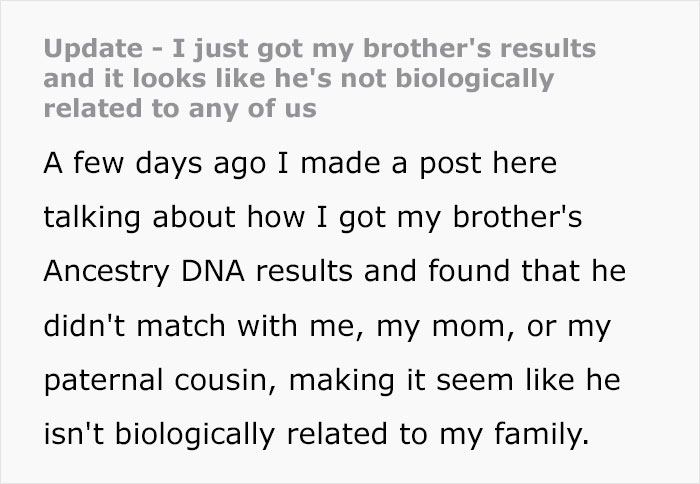
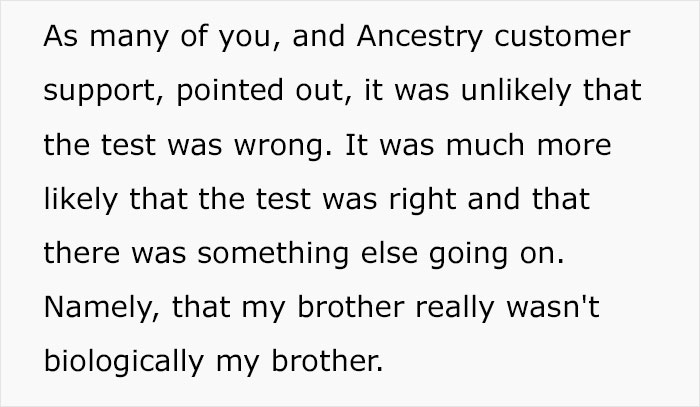

Image credits: Getty Images / Unsplash (not the actual photo)
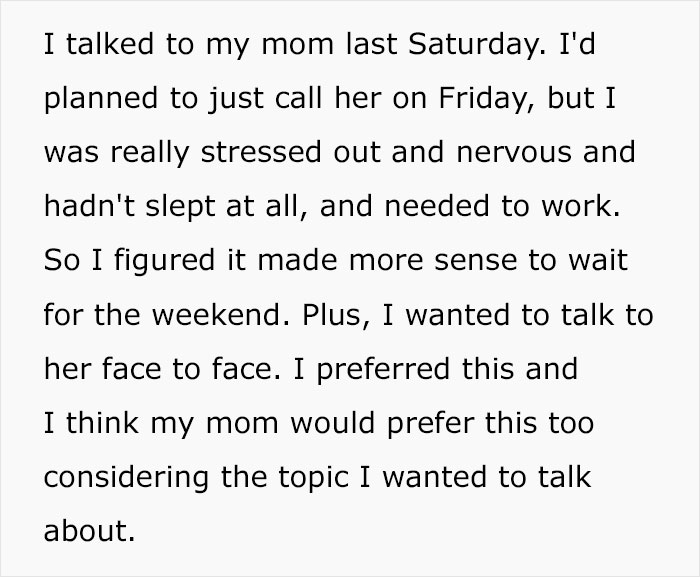
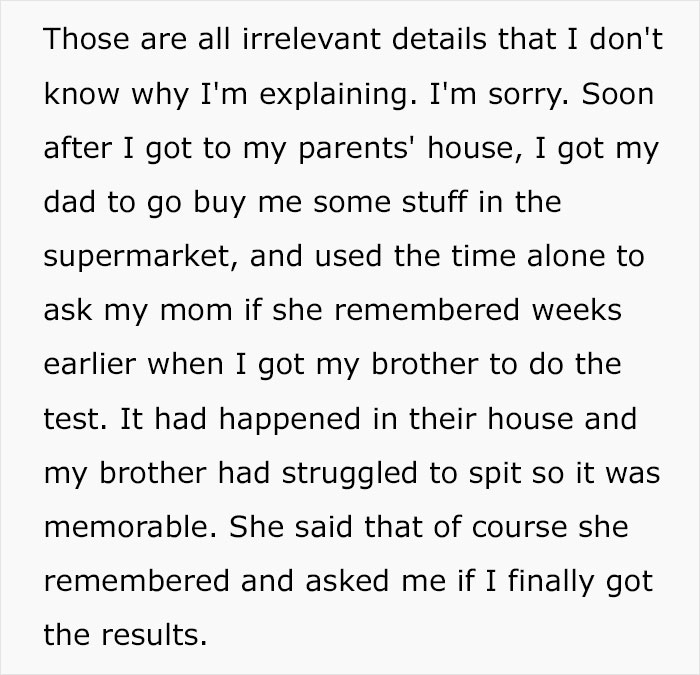

Image credits: Getty Images / Unsplash (not the actual photo)
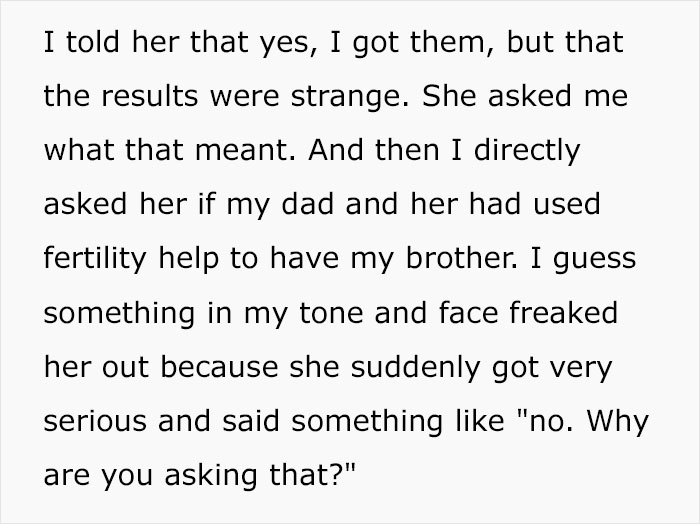

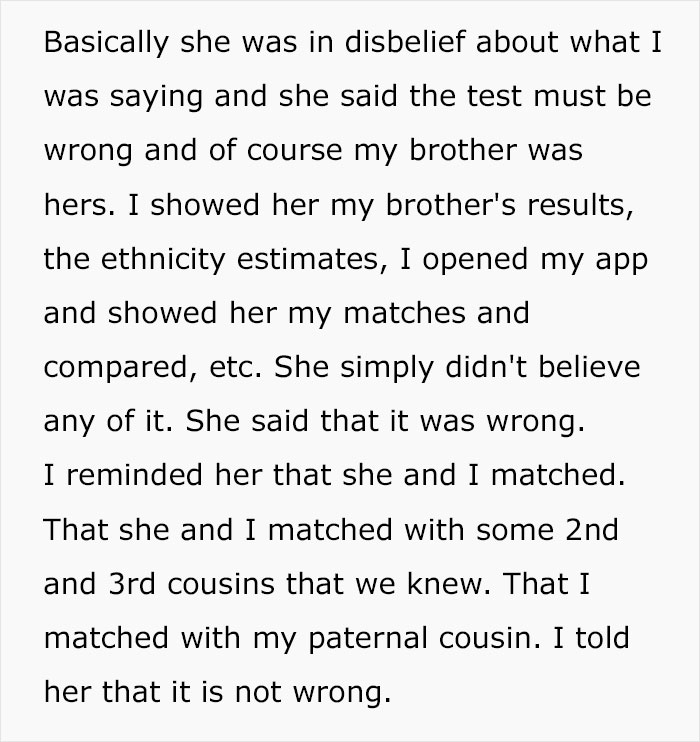

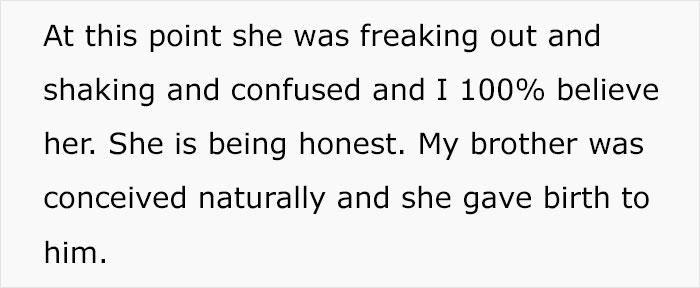

Image credits: Getty Images / Unsplash (not the actual photo)
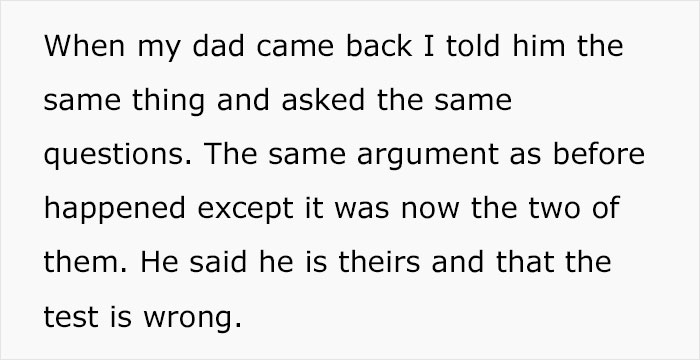
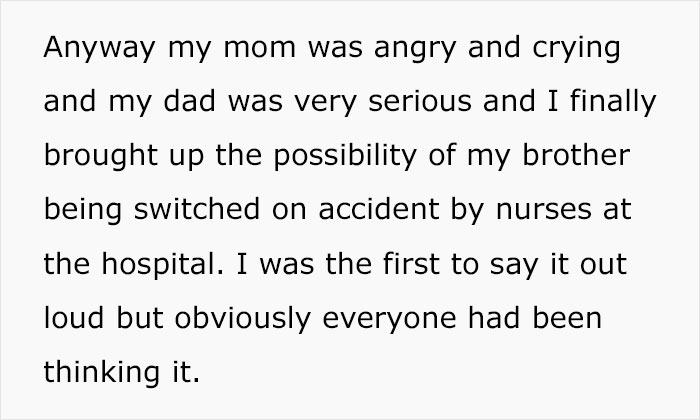
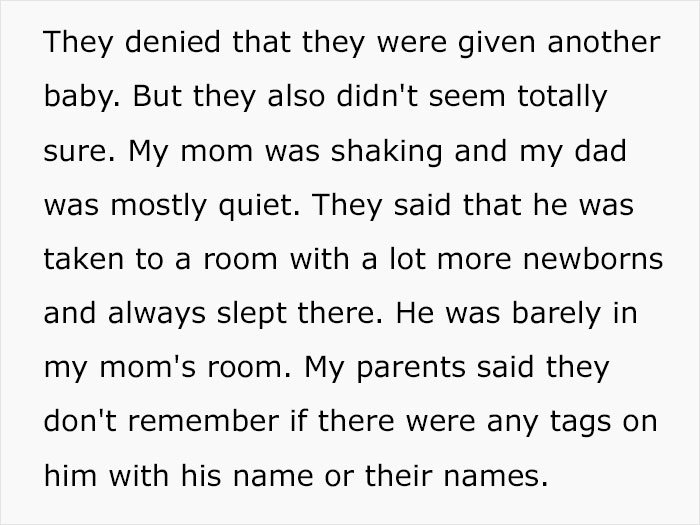

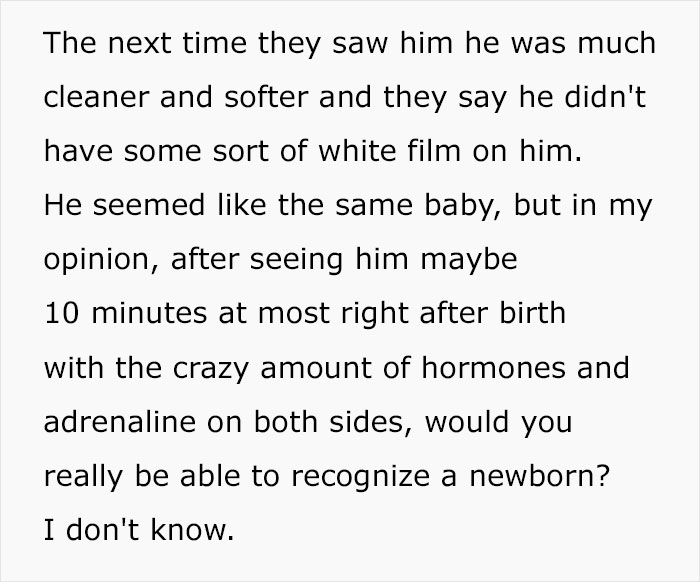

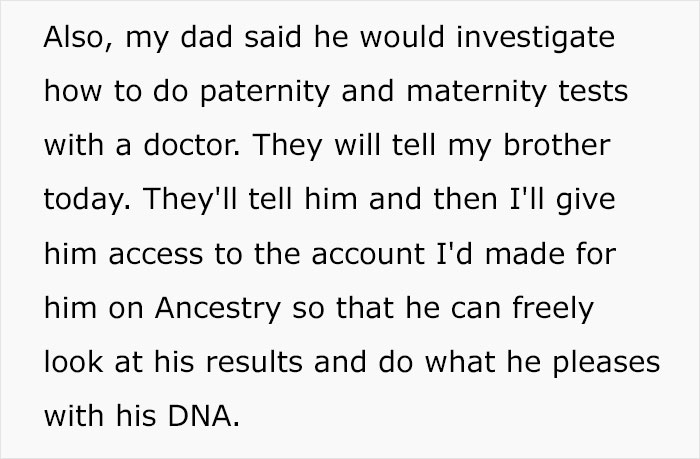




Image credits: BigPensamientos
People wished her luck: “There is an answer to this and I so do hope you find it”
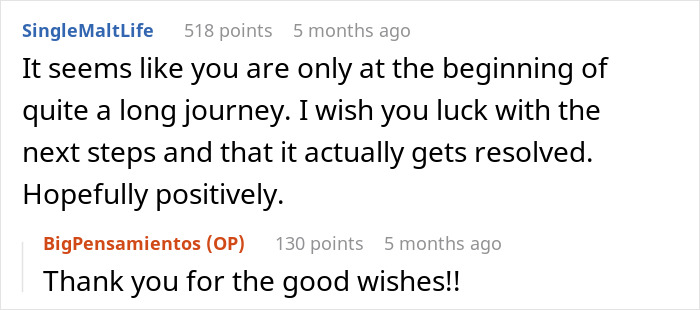


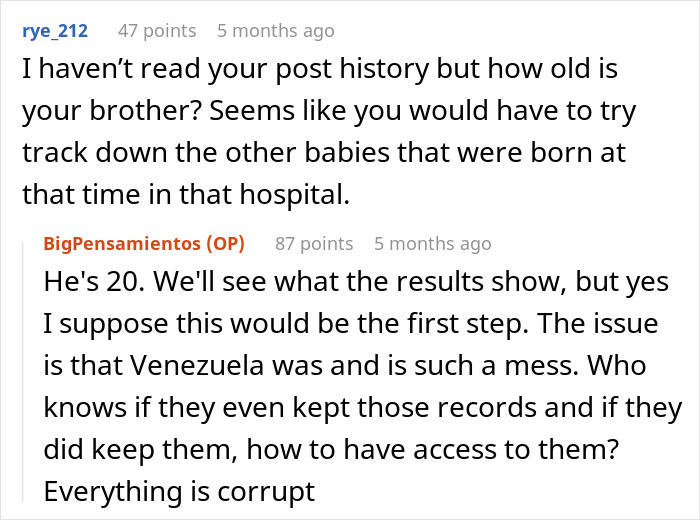
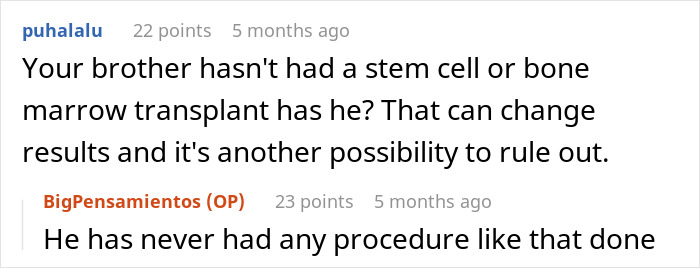
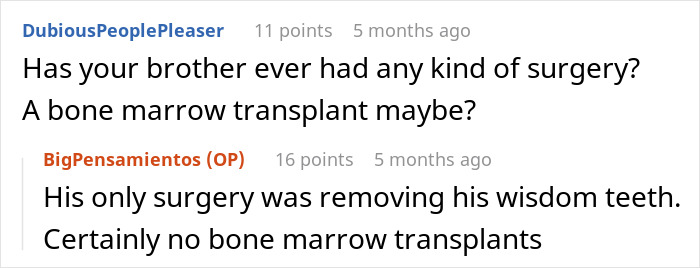
Six months later, the brother found biological matches living in the U.S., but none were responding



Image credits: cottonbro studio / Pexels (not the actual photo)






Image credits: Wesley Tingey / Unsplash (not the actual photo)



Image credits: BigPensamientos
People in the comments advised them to stop messaging matches and find a “search angel”




